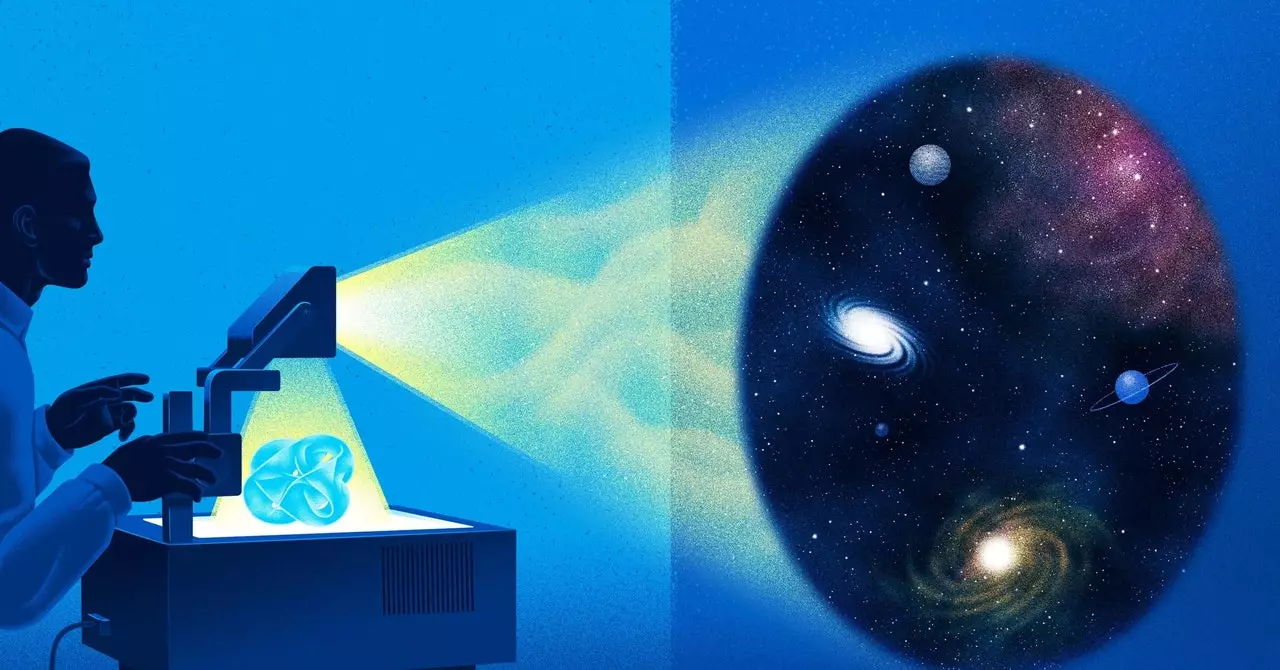A recent development in the field of string theory has seen the convergence of traditional mathematical calculations with machine learning algorithms. The innovative approach led by Burt Ovrut and Andre Lukas utilized neural networks to enhance the accuracy of calculations related to Calabi-Yau manifolds. By incorporating neural networks to handle various types of sprinkles, the researchers were able to achieve a more realistic representation of complex fields, ultimately leading to the calculation of Yukawa couplings and quark masses. This groundbreaking method showcases the potential of machine learning in pushing the boundaries of string theory calculations, unlocking new possibilities for understanding the fundamental aspects of the universe.
The application of machine learning algorithms to string theory presents a significant advancement in the quest to unveil the mysteries of particle physics. The ability to accurately calculate particle masses based on different manifold shapes marks a pivotal moment in the field, demonstrating the potential of machine learning to enhance traditional theoretical frameworks. While the study focused on simpler quantum fields and non-universe-representative Calabi-Yau manifolds, the results serve as a proof of concept for future endeavors into more intricate models. The integration of machine learning in string theory calculations opens up avenues for exploring new phenomena and making unprecedented discoveries in the realm of particle physics.
As researchers delve deeper into the integration of machine learning and string theory, they encounter both challenges and opportunities for further advancement. The limitation of neural networks in handling more complex doughnut configurations poses a hindrance to studying a broader range of manifolds. Additionally, the transition to exploring manifolds with hundreds of holes introduces new complexities that require sophisticated neural networks. Despite these challenges, the potential for uncovering the standard model through machine learning-driven string theory calculations remains a compelling motivation for researchers.
Looking ahead, the intersection of machine learning and string theory presents a myriad of possibilities for unraveling the fundamental principles of the universe. By leveraging machine learning algorithms to analyze a vast array of Calabi-Yau manifolds, researchers aim to identify patterns that could lead to the discovery of the underlying structure of reality. The pursuit of identifying specific doughnuts and sprinkles that align with observable particle masses and couplings represents a promising avenue for future research. While some theorists advocate for a systematic exploration of broad string theory solutions before focusing on individual manifolds, others believe that delving into specific configurations could yield new insights and predictions.
The fusion of machine learning and string theory marks a significant milestone in the quest to understand the intricacies of the universe. By harnessing the power of neural networks to enhance traditional calculations, researchers are pushing the boundaries of theoretical physics and exploring new avenues for discovery. While challenges and uncertainties persist, the intersection of machine learning and string theory offers a promising path towards unraveling the mysteries of particle physics and cosmology. As scientists continue to explore the potential of machine learning in theoretical frameworks, the future holds exciting possibilities for unlocking the secrets of the universe.


Leave a Reply
You must be logged in to post a comment.